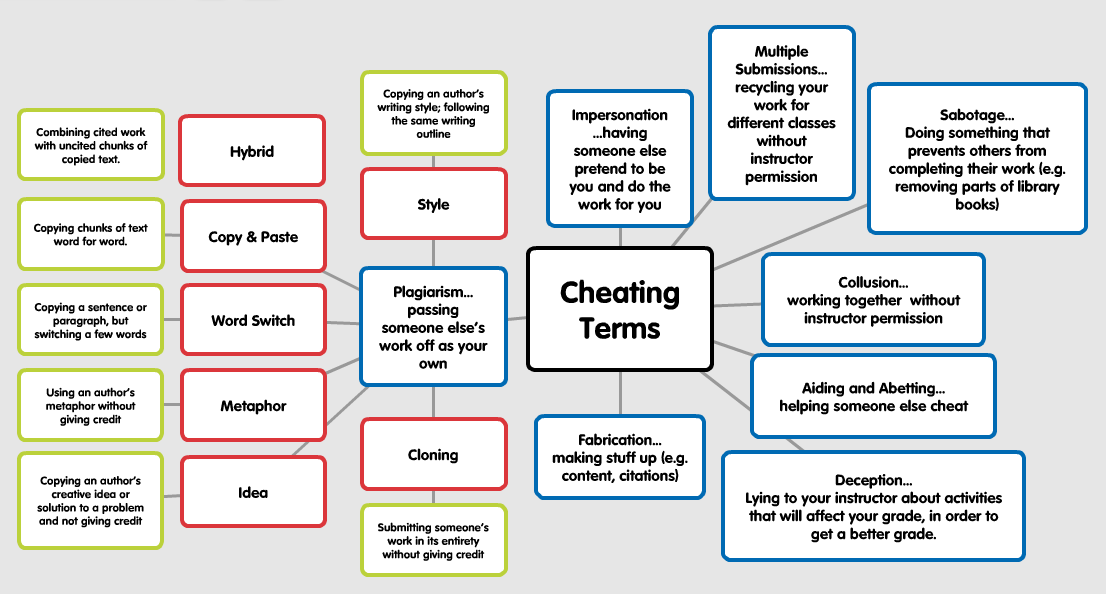I am participating in a MOOC (Massive Open Online Course) facilitated by Dr. Bernard Bull from Concordia University Wisconsin. The MOOC topic is understanding cheating in online courses. I hope to learn a lot of good information over the next 8 weeks that I can share with you.
This week’s objective is to define cheating, which at first glance seems like a pretty simple task. After reading the resources provided by Dr. Bull, however, I learned that there are, in fact, many different types of cheating. Two types that I hadn’t really thought of before were “sabotage” and “fabrication.” Sabotage is deliberately setting a classmate up for failure. An example of this is ripping pages out of a library book that the student would need to complete a paper. Is there a way for online students to sabotage each other? This is something I’ll be thinking about this week. If you have any thoughts, I’d love for you to comment on this post.
Fabrication is simply making things up. I honestly have never really thought about students just inventing, for example, statistics or citations. Unless the fabrication is wildly outrageous, this type of cheating could be difficult to catch. I realize that this could have slipped past me in the past, and I need to be more aware of it in the future.
Plagiarism is probably one of the first things we associate with cheating. Well, plagiarism is definitely more than just copying someone else’s work! I learned that one of the most common plagiarism offenses is copying an author’s reasoning style. This is where a student writes a paragraph or paper using the exact same outline as the source author. Even if the words are completely different, it is still considered plagiarism. I also learned if you use the source author’s metaphor to illustrate something, but do not give him/her credit, that is plagiarism as well. Same goes for using his/her idea or solution to a problem.
Copying and pasting large chunks of text is pretty easy to catch, but what about the other types of cheating, such as those mentioned above? While fabrication and sabotage are obviously intentional, my guess is that plagiarizing outlines, ideas, metaphors, etc. is often done out of ignorance. Although we provide writing resources and assistance to our online students, their success depends on the student reaching out to use them. Perhaps a better approach is to embed resources and learning opportunities within the course itself, and directly tie them to assignments that pose a risk for plagiarism.


Thanks for getting us started with a great post and visual! I might need to create a special badge for you.
I love how your graphic is both concise and packed with key concepts from the readings.
Angie,
I loved the graphic you created and it’s message condensed into a one page synopsis. I am participating in this MOOC as well, and am on a real learning curve with those cheating concepts I haven’t even thought of before, but they are on my radar now.
I am not sure how/if we will be able to “catch everything”, or ask our instructors to. Early on, I am beginning to think we need to create a learning environment with a focus on the learning more so than a product, and that a cheating guide be included with each course which brings some of these new concepts of cheating to students’ attention. As you stated, some of it is ignorance, and if ignorance can be minimized so may the incidence of cheating.
Barb,
I agree. I think the learning environment and activities are the key to mitigating these issues. If we create learning opportunities that can’t necessarily be Googled, then we will be in a better position to avoid many types of cheating.
Angie